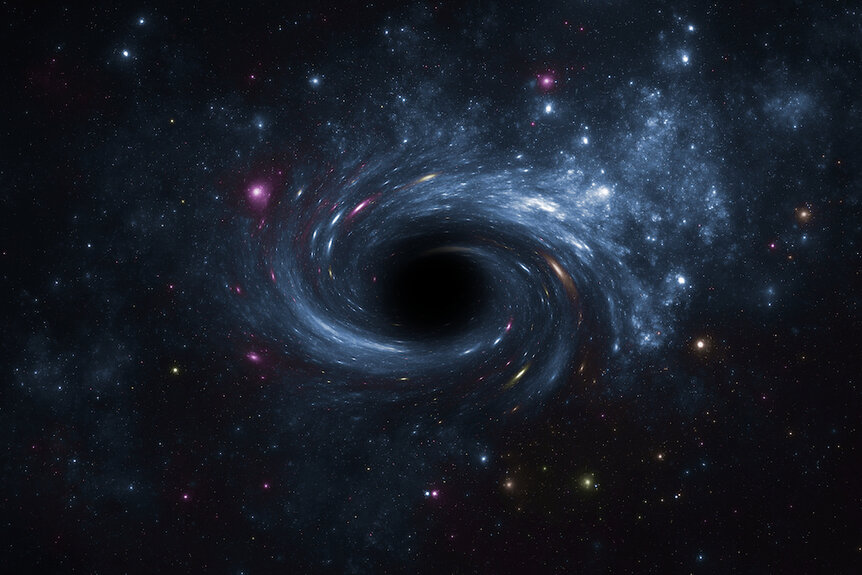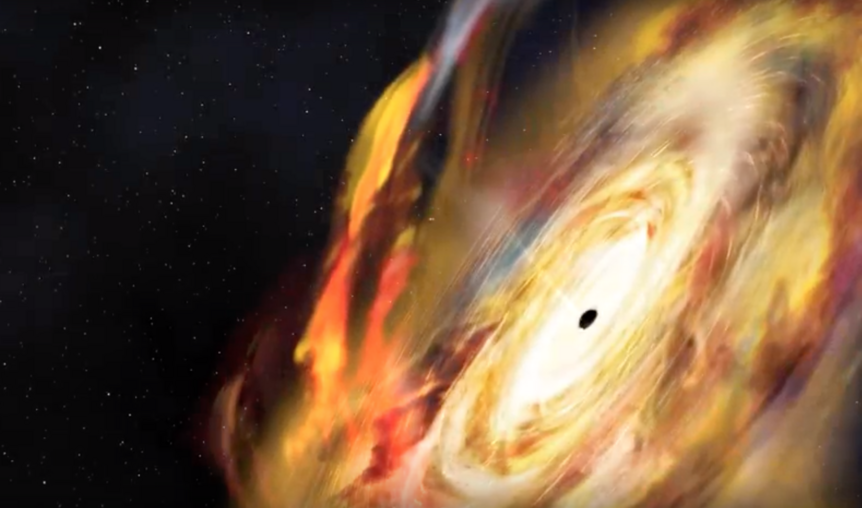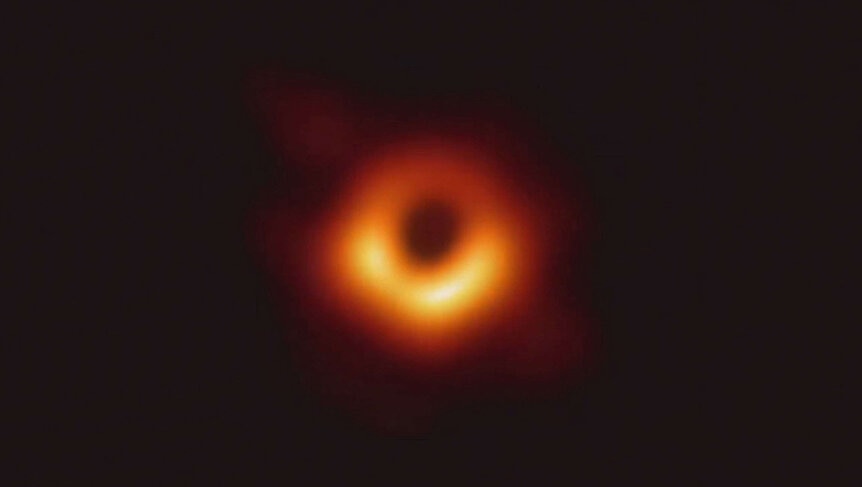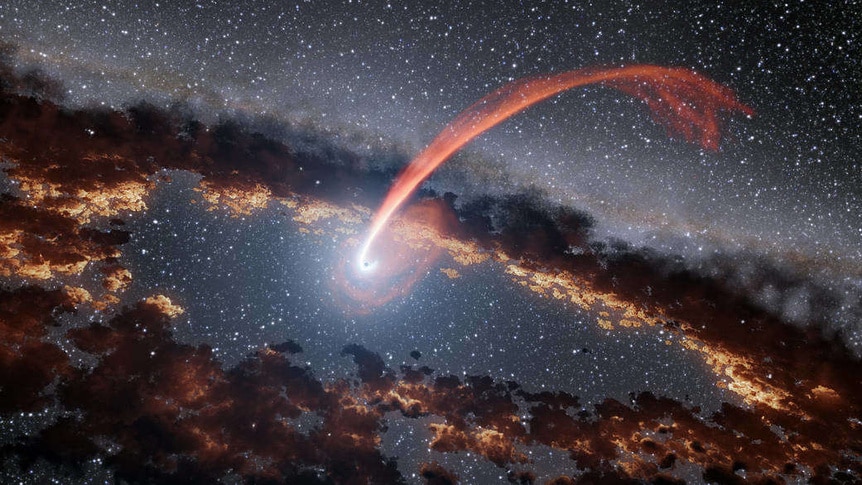Create a free profile to get unlimited access to exclusive videos, sweepstakes, and more!
How Worried Should We Be About Black Holes? Separating Fact from Fiction
What are black holes hiding?
In the three-part finale of SYFY’s Battlestar Galactica, the crew of the Galactica mounts a rescue mission to the Colony, a Cylon base located near a black hole. By the time the proverbial dust settles, a series of nuclear missile strikes have knocked the Colony out of orbit and on a collision course with the nearby black hole.
Ever since black holes entered the public consciousness, they have made regular appearances in science fiction. Sometimes they are used as weapons, sometimes they are portals to some other place or time, and sometimes they are just cosmic obstacles to contend with. If our stories are any indication, then black holes are going to be a regular part of our reality once we get outside the solar system, but our stories might not be the best indication of what’s really going on out there.
For More on Black Holes:
Biggest and Hungriest Black Hole Ever Discovered Eats a Sun a Day
JWST Spies Oldest Black Hole Ever Found at the Fringes of the Known Universe
Heaviest Black Hole Pair Ever Found Weighs in at 28 Billion Times the Mass of the Sun
Has Anyone Ever Died in a Black Hole?
No, no one has ever died in a black hole. At least not anyone human. The closest black hole we know of is still pretty far away and you couldn’t get there if you wanted to. Humanity hasn’t leveled up enough in our spacefaring abilities to have encountered the opportunity to die by black hole, but if we expand our definition of personhood to include any intelligent extraterrestrials out there in the wide universe, then who knows?
Black holes are incredibly powerful cosmic objects, the densest and most gravitationally hungry things in all of existence. They are jealous hoarders of every type of matter, the great roach motels of the cosmos. Their defining characteristic is that once a star, planet, dust cloud, or lost astronaut goes inside the event horizon, it never comes out again. Nothing escapes, not even light.
If, somewhere in the vastness of existence someone has met their maker in the heart of a black hole, it might have been one of the weirdest deaths in the history of everything. More on that in a minute.
What’s On the Other Side of a Black Hole?
When it comes to black holes, there’s still so much we don’t know. While astronomers have been thinking about the possibility of black holes for more than a century, they are still a relatively recent addition to cosmology. Most of what we know about them comes from indirect observations and math. In all likelihood, there is no other side.
We call them black holes because they are dark and because things fall into them, but “hole” might not be the most accurate choice of words. There’s nothing to fall through. Instead, black holes are just dense collections of matter compressed into an infinitely small singularity. From a certain point of view, we can think of falling into the gravity well of a black hole the same way we think of falling into the gravity well of a planet. The only difference is the amount of gravity at play.
The “surface” of a black hole, its event horizon, isn’t really a surface. Rather, it’s the point at which the escape velocity needed to turn back exceeds the speed of light. For any astronauts in nearby spacecraft, their practical event horizon might be farther out, wherever the inward gravitational pull exceeds the output of their engines. Once you cross that invisible boundary, you’re locked into a one-way trip toward the center of gravity at the middle of the black hole. There is no other side, just like there’s no other side for a satellite crashing back to Earth. Your final destination is becoming one with the infinitely dense point of matter at the black hole’s center.
Of course, that could all be wrong. The math allows for the existence of white holes, the exact opposite of a black hole, though none has ever been seen. If white holes do exist, they might pair up with black holes to create a pathway through spacetime known as a wormhole. Barring any evidence of white holes or stable wormholes, there’s little reason to think this is the case.
How Close Is the Closest Black Hole?
We now know that black holes not only exist, but they also have populations measured in the billions. Our own galaxy has a supermassive black hole around which the rest of the galaxy spins, like horses on a carousel, and astronomers believe that most other large galaxies have their own supermassive black hole.
Ours is called Sagittarius A* (abbreviated Sgr A* and pronounced “Sagittarius A Star”) and it has an estimated mass 4 million times that of the Sun. It’s located about 26,000 light-years from here in the center of the galaxy, and in 2022 astronomers took a picture of it using the Event Horizon Telescope. That was just a few years after the very first picture of a black hole (above) was taken in 2019. Sgr A* might be the most famous black hole in our galaxy but there are plenty which are closer. In fact, astronomers estimate there may be as many as 100 million black holes in our galaxy alone, and we have no idea where most of them are.
By their nature, black holes are hard to find. Scientists seek them out by observing their gravitational influence or by catching the light show coming off of hot gas and matter swirling around a black hole or falling in. The closest known black hole is called Gaia BH1 and was only discovered in 2022, as part of the European Space Agency’s (ESA’s) GAIA mission.
GAIA works by measuring the position and motion of billions of stars all at the same time. Astronomers can then come through that data to see how individual stars or groups of stars are moving. That’s how they found stars moving orbiting dark points of intense gravity. This technique revealed the closest and second-closest black holes ever found, known as GAIA BH1 and GAIA BH2, at distances of 1,560 and 3,800 light-years, respectively.
The organization of the BH1 system might look pretty similar to our own solar system, with a few critical changes. Instead of the Earth, you have a star about the same diameter and mass as the Sun, and instead of the Sun at the center, you have a black hole roughly 10 times the mass of the Sun. Despite its incredible mass, the black hole has an event horizon just 17 miles from its center.
What Would Happen if You Got Sucked into a Black Hole?
It wouldn’t be good, but it would be interesting, and it depends on the sort of black hole you decide to jump into. A stellar mass black hole, one with a mass comparable to that of common stars, would kick off a horrifying process known as spaghettification if you got too close. The process gets its name because it rapidly transforms any object into a long, thin tube not unlike a piece of spaghetti pasta. Here’s why.
Everything with mass exerts some gravitational influence on everything else with mass. That’s true of the floor and your feet and it’s true of you and a black hole. The important factor is how much gravitational influence each object has on the other and that is determined by their mass and proximity. The general rule is the more massive and the closer two things are, the more they pull on one another.
A consequence of that, though one you’ve probably never noticed, is that the Earth is pulling on your feet more than it’s pulling on your head. The meter or two of distance between your tip and your toes isn’t far enough to make a noticeable difference here on Earth, but beyond the event horizon of a stellar mass black hole it would be.
As you fall in, the part of you that’s closest to the singularity gets pulled faster than the part of you that’s farthest away. If you jumped in feet first, your toes would start to pull ahead of the rest of you and every bit of distance they gained would ratchet up the gravity and pull on them even harder. Gravity would grab hold of you like the thread of a sweater and stretch you out into one glorious but wholly deceased thread. That’s spaghettification.
If you were hoping your death by black hole would have a less wacky sounding name, too bad! Falling into a supermassive black hole is goofy too. When stars (or you, we assume) fall into a supermassive black hole they rapidly flatten and then explode, releasing a mind-bending amount of thermonuclear energy. That undeniably badass process is known as pancake detonation, and if you’re going to meet your maker on the other side of an event horizon, it’s about the best you can hope for.
It almost makes you feel bad for the Cylons. Almost.


































